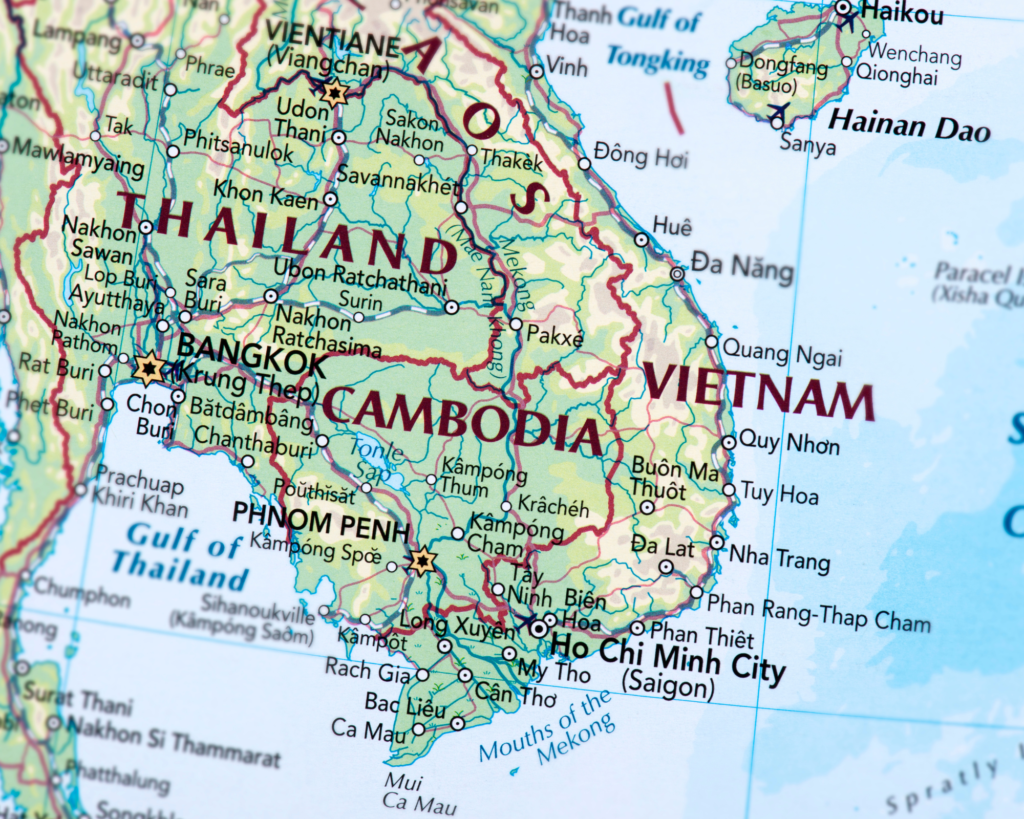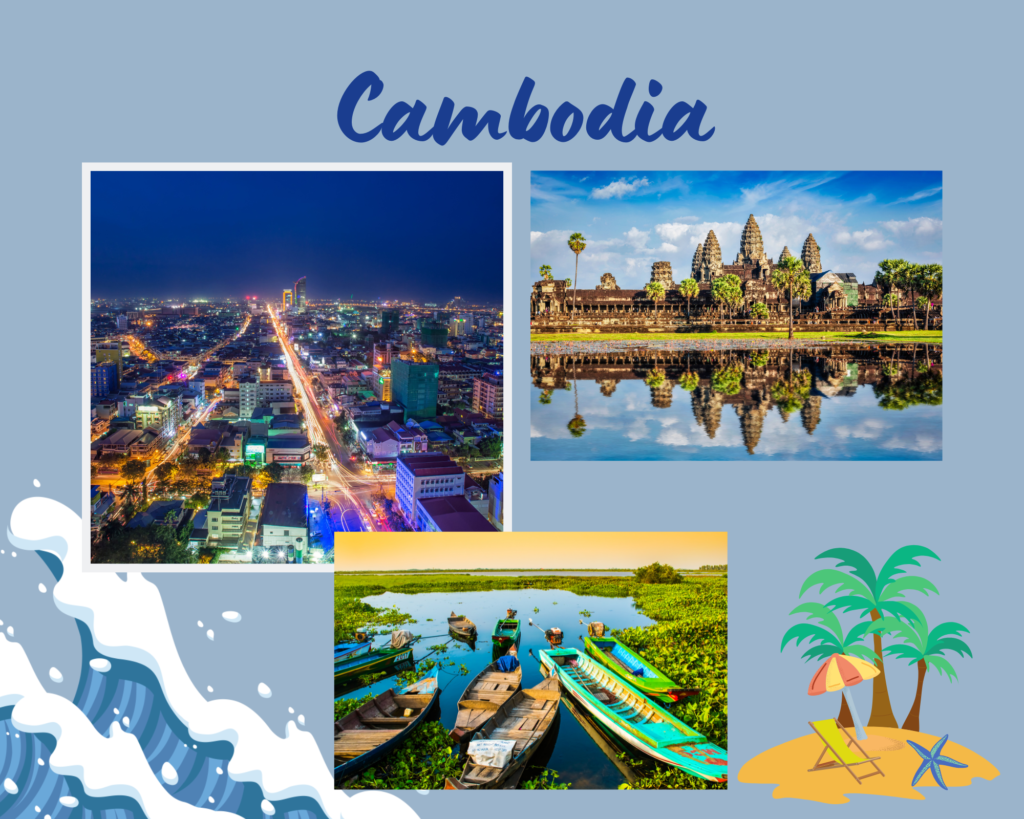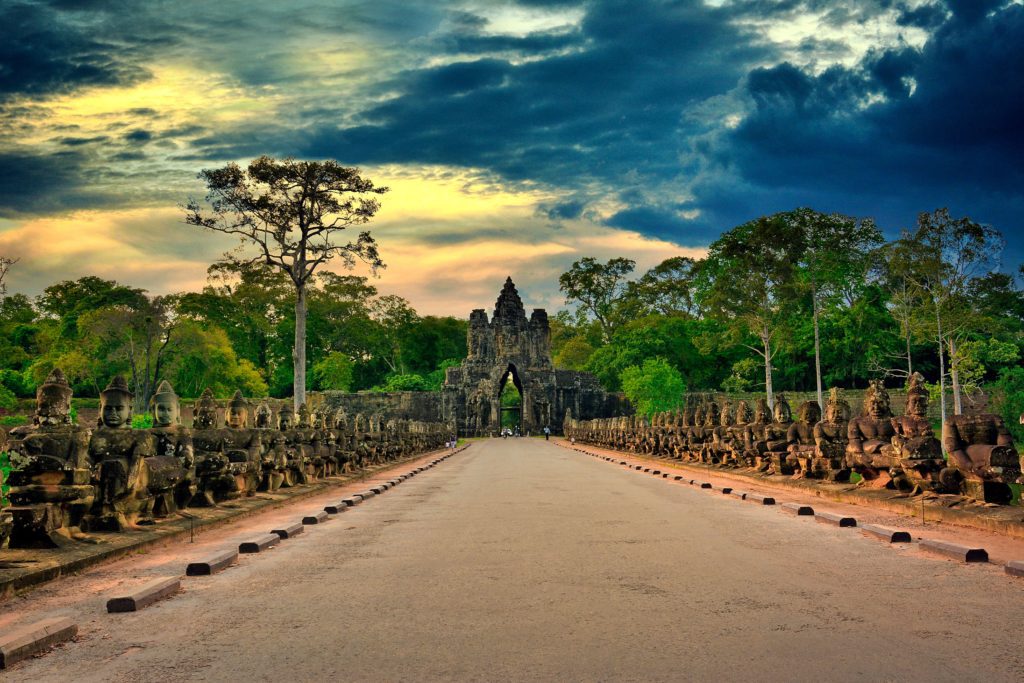Cambodia on the map

Cambodia,The land of smiles
We crossed the border by speedboat from Vietnam and arrived in Cambodia, on a beautiful and sunny afternoon. We visited the attractions of Phnom Penh where we learned some of the country’s history, and then we went to Siem Reap. We liked Cambodia very much, first of all because of the warm and friendly people, who even though they are poor try to go ahead with a smile on their face and treat the tourists with attention and gratitude.
Cambodia, officially the Kingdom of Cambodia, is a country located in the southern portion of the Indochinese Peninsula in Southeast Asia, spanning an area of 181,035 square kilometres (69,898 square miles), bordered by Thailand to the northwest, Laos to the north, Vietnam to the east, and the Gulf of Thailand to the southwest. The capital and largest city is Phnom Penh.
The sovereign state of Cambodia has a population of over 17 million. Buddhism is enshrined in the constitution as the official state religion, and is practiced by more than 97% of the population. Cambodia’s minority groups include Vietnamese, Chinese, Chams and 30 hill tribes. Cambodia has a tropical monsoon climate of two seasons, and the country is made up of a central floodplain around the Tonlé Sap lake and Mekong Delta, surrounded by mountainous regions.
The capital and largest city is Phnom Penh, the political, economic and cultural center of Cambodia. The kingdom is an elective constitutional monarchy with a monarch, currently Norodom Sihamoni, chosen by the Royal Council of the Throne as head of state. The head of government is the Prime Minister, currently Hun Sen, the longest serving non-royal leader in Southeast Asia, who has ruled since 1985.
The United Nations designates Cambodia as a least developed country. Cambodia is a member of the United Nations, ASEAN, the RCEP, the East Asia Summit, the WTO, the Non-Aligned Movement and La Francophonie. While per capita income remains low compared to most neighboring countries, Cambodia has one of the fastest-growing economies in Asia.

Cambodia Travel Guides
Subscribe to our newsletter
Agriculture remains the dominant economic sector, with strong growth in textiles, construction, garments, and tourism leading to increased foreign investment and international trade. Rich in biodiversity and seasonal tropical forests, Cambodia has a high rate of deforestation and is considered among the most vulnerable countries to climate change.
Cambodia’s climate, like that of the rest of Southeast Asia, is dominated by monsoons, which are known as tropical wet and dry because of the distinctly marked seasonal differences.
Cambodia has a temperature range from 21 to 35 °C (70 to 95 °F) and experiences tropical monsoons. Southwest monsoons blow inland bringing moisture-laden winds from the Gulf of Thailand and Indian Ocean from May to October. The northeast monsoon ushers in the dry season, which lasts from November to April. The country experiences the heaviest precipitation from September to October with the driest period occurring from January to February.
According to the International Development Research Center and The United Nations, Cambodia is considered Southeast Asia’s most vulnerable country to the effects of climate change, alongside the Philippines. Nearly all provinces in Cambodia are affected by climate change. Rural coastal populations are particularly at risk. Shortages of clean water, extreme flooding, mudslides, higher sea levels and potentially destructive storms are of particular concern, according to the Cambodia Climate Change Alliance. Climate change has also had a major impact on water levels, ecology and productivity of the Tonlé Sap in recent years, affecting the food security and agriculture of a large proportion of Cambodia’s population.

